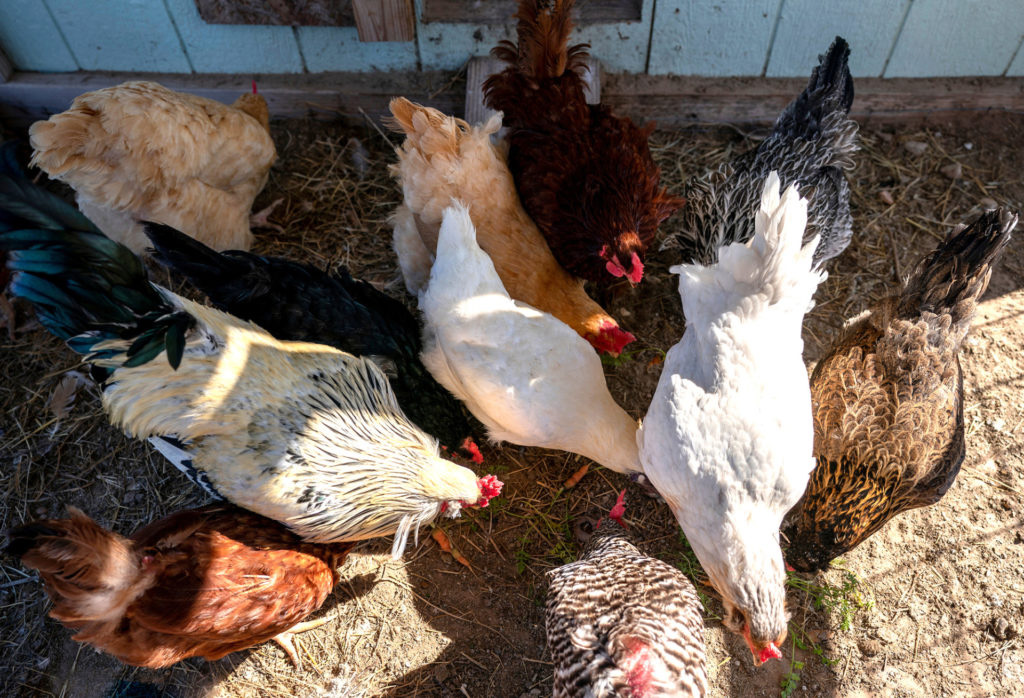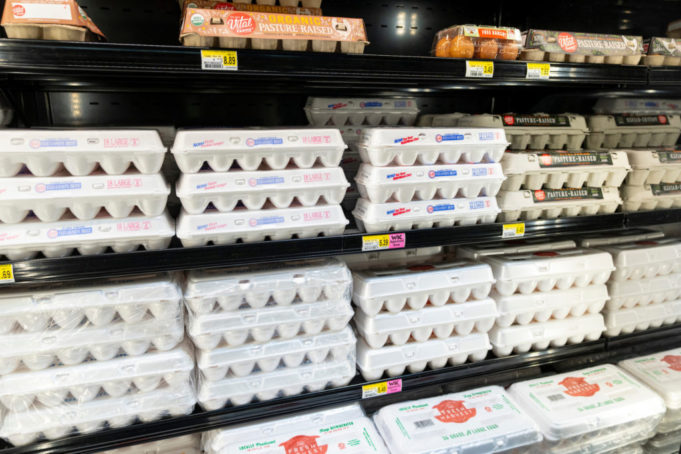From commercially sourced eggs to those from backyard hens, all chickens can be at risk of catching bird flu. Highly pathogenic avian influenza, HPAI, specifically HPAI H5N1, sometimes commonly referred to as “bird flu,” is something that has affected almost everyone, whether they realize it or not.
This virus is causing disruptions in the poultry industry, triggering a price increase on eggs and other poultry products in the grocery store not felt since the last time the U.S. experienced a major avian influenza outbreak in 2015. According to experts at Texas A&M AgriLife, this time is different.
Martin Ficken, DVM, Ph.D., resident director at Texas A&M Veterinary Medical Diagnostic Laboratory, TVMDL, Gonzales, is an expert in poultry diseases with an emphasis on HPAI. Below, he explains what makes this virus so devastating and what should be done if you think you have an infected flock.
What is avian influenza?
It is a viral infection in the same class as human influenza and can present as a respiratory infection. Avian influenza has a high morbidity and mortality rate, approaching 100%. An infected bird will infect other birds very quickly, with death almost certain with 48 hours.
Where does avian influenza come from and how is it spread?
The virus has been spread around the country to every state in the U.S. except Hawaii by the wild bird population. They serve as carriers and spread it as they migrate. Poultry and other birds can pick up the virus particles via respiratory exposure as well as through feces. Poultry can pick it up simply by being in the same space where an infected wild bird once stood. While avian influenza is of greater concern to commercial poultry producers, backyard flock owners can have birds become infected.
The virus thrives in cold weather. Previous outbreaks in the U.S. have subsided in summer months due to the heat. However, the most recent outbreak that began in 2021 did not. It diminished but never completely disappeared, so it is no longer considered an exotic virus that can be eradicated. It is here to stay.
What symptoms should poultry owners look for in their flock?
The first thing people will likely notice is dead birds. They may also notice birds that are lethargic, have ruffled feathers or look depressed. Essentially, what you would imagine when you think of a sick bird. If people happen to see an infected bird while still alive, it will very likely die within hours to a day.

Courtesy Texas A&M AgriLife
What should you do if you suspect a bird in your flock has avian influenza?
There really is no treatment for sick birds due to the morbidity and mortality rate of avian influenza. If producers suspect they have infected birds, the best thing to do is contact the Texas Animal Health Commission, or their local AgriLife service agent.
What can producers do to protect their flocks against avian influenza?
The most important thing for anyone raising poultry is to be vigilant and strict with their biosecurity measures. Prevention is really the only treatment for avian influenza. Prevention and biosecurity are key factors in protecting chickens, backyard flocks included.
While it would be best not to let others on your poultry premise, if you must, make sure they follow all biosecurity protocols such as a change of clothes and shoes. While it may seem harmless to do something as simple as wearing the same pair of shoes into your building as you wore to the grocery store, you don’t know where people at the store have been and what you could be carrying back to your flock.
It is also important not to let your poultry comingle with wild birds or in areas where wild birds have access, especially ponds that may attract ducks and geese. That is where some of the positive cases in Texas originated.
Can I get avian influenza?
At this time, human contraction is not a concern. Birds and eggs destined for the food supply are tested for avian influenza. If a bird with the virus particles were to inadvertently be consumed, standard cooking protocols would kill the virus.
How many positive cases has Texas had?
As of the beginning of February, on a nationwide basis, there have been 403 positive commercial poultry premises and 342 positive non-commercial premises in 47 states. Louisiana and West Virginia are the only two states to have only wild bird detections at this time. A total of 49 states have had 5,956 detections in 142 species of wild birds. Texas has had three poultry premises test positive for birds with the virus, but at this time, none were commercial premises. Additionally, there have been a number of wild birds and zoo animals test positive in the state.
What happens next?
Regulatory agencies will continue to monitor the spread of avian influenza. Testing will continue to be done on birds and eggs destined for the food supply, and regularly mandated testing will continue for commercial premises. No vaccine is currently available but it is being discussed as a possible solution. The high morbidity and mortality rate of the virus, coupled with depopulations of infected flocks, will continue to influence egg and poultry prices at the grocery store.
For information on shopping for eggs locally, see The Golden Egg article also in this issue of Zest 2023.
Content provided by Texas A&M AgriLife












